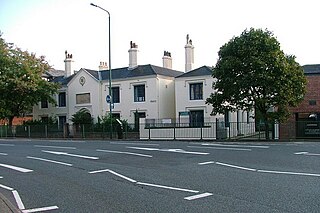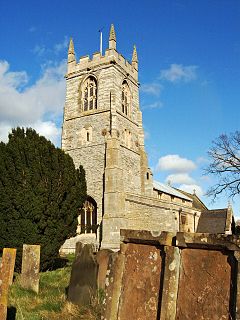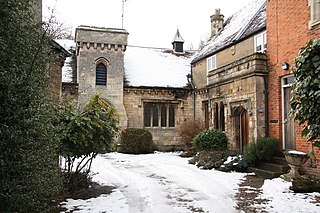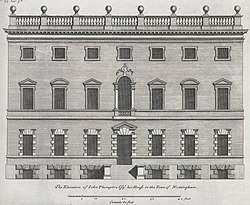
Arnold is a market town and unparished area in the Borough of Gedling in the ceremonial county of Nottinghamshire in the East Midlands of England. It is situated to the north-east of Nottingham's city boundary. Arnold has the largest town centre in the Borough of Gedling and the most important town centre in the northeastern part of the conurbation of Greater Nottingham. Gedling Borough Council is headquartered in Arnold. Since 1968 Arnold has had a market, and the town used to have numerous factories associated with the hosiery industry. Nottinghamshire Police have been headquartered in Arnold since 1979. At the time of the 2011 United Kingdom census, Arnold had a population of 37,768.

Mansfield railway station is a railway station which serves the town of Mansfield in Nottinghamshire, England. Alternatively it is named Mansfield Town, to distinguish itself from the GCR's former Mansfield Central and Mansfield Woodhouse's station. The station is 17 miles (27 km) north of Nottingham on the Robin Hood Line, and is managed by East Midlands Railway. The station building is Grade II listed.

Watson Fothergill was a British architect who designed over 100 unique buildings in Nottingham in the East Midlands of England, his influences were mainly from the Gothic Revival and Old English vernacular architecture styles.
Leicester was a parliamentary borough in Leicestershire, which elected two members of parliament (MPs) to the House of Commons from 1295 until 1918, when it was split into three single-member divisions.

Thomas Chambers Hine was an architect based in Nottingham.

Plumptre Hospital was a charity in Nottingham providing almshouse accommodation for 599 years from 1392 to 1991.

The Flying Horse Inn is a former public house in Nottingham. It was established around 1483. It is a Grade II listed building.

St Werburgh's Church is an Anglican church on Friargate in the city of Derby, England. It is recorded in the National Heritage List for England as a Grade II* listed building. In this church, Samuel Johnson married Elizabeth Porter in 1735.
William Herbert Higginbottom JP was an architect based in Nottingham.

St John the Baptist's Church, Collingham is a Grade I listed parish church of the Church of England in the village of Collingham, Nottinghamshire.

The Manor House is a set of connected buildings located on Northgate in the English town of Sleaford, Lincolnshire. A complex arrangement, parts of the Manor House date to the 16th century, but they were extended with the addition of the Georgian Rhodes House and later Gothic-Revival work. It was a private residence until the 20th century, and is now divided into commercial properties and residential apartments. The house was owned by a number of families and individuals, including local banker and businessman Benjamin Handley and Sophia Peacock, whose nephews, Cecil and Frank Rhodes, spent their summers at the estate as children.

Captain Gilbert Smith Doughty CE was an architect based in Nottingham and Matlock.

Samuel Dutton Walker F.S.A. was an architect based in Nottingham.

John Howitt FRIBA was an architect based in Nottingham.

County House is a Grade II listed building at 23 High Pavement, Nottingham.

St Mary’s Gate is an historic street in the Lace Market area of Nottingham City Centre between High Pavement and Warser Gate.

Pierrepont House was the home of the Pierrepont family located on what is now Stoney Street, Nottingham.
John Plumptre, British politician, was the first son of John Plumptre and Arabella Molyneux.

Robert Clarke was an architect based in Nottingham.

Newdigate House is a Grade II* listed building on Castle Gate, Nottingham.



















